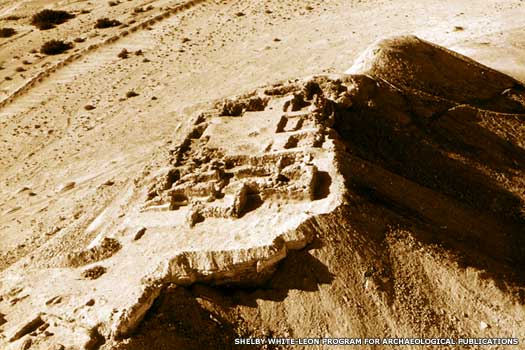
| EMAR (ASTATA) An early Syrian city state founded in the mid-third millennium BC, Emar was situated at modern Tell Meskéné, a crucial crossroads on the southern (western) bank of the great bend in the Euphrates. Still less well-known that its contemporaries, the archaeological site in modern Syria includes hundreds of cuneiform documents, major architectural remains, private homes, personal archives, and a wealth of material culture. It was an important Bronze Age trading centre due to its position midway between cities such as Mari and those of western Syria. By the fifteenth century BC it was part of the kingdom of Astata, but the state's level of independence is debatable, as by then the region was under the control of Mitanni. Following that, it became a vassal state under the Hittites.
c.1776 - 1600 BC :
Following the break-up of the kingdom of Upper Mesopotamia, the state of Yamkhad becomes the dominant force in north-western Syria, controlling Emar. Emar seems to have close relations with the city of the god Dagan at Tuttul, with the latter perhaps serving as Emar's own religious centre.
c.1650 - 1620 BC :
Idrimi, son of the king of Alep, is forced to flee his homeland for Emar, from where he organises the storming of Alakhtum by sea with his band of habiru followers.
Although Emar's rulers for the seventeenth century BC are unknown, could they have aided Idrimi in his conquest of Alakhtum from this city? 1478 BC :
Egypt begins to move into Syria, on Mitanni's southern border, reaching the Euphrates, building ships, and ravaging the banks all the way from Carchemish to Emar, towns that belong to Mitanni.
c.1340 BC :
Suppiluliuma, the new Hittite ruler, takes control of northern Syria. Emar remains a Hittite subject state under the control of Carchemish but with its own royal house, and customs and practices, albeit with a limited role and power. No evidence can be found for a ruling house being in place before the Hittite conquest, suggesting that it was only established under the Hittites. In fact, it seems more than likely that Emar had no tradition of kingship before the coming of the Hittites, despite already having been an urbanised centre for over a millennium.
Iasi-Dagan
Ba'al-kabar
Zu-Ashtarti
Abbanu
Pilsu-Dagan
Elli
c.1200 BC :
While the majority of Emar's texts seem to have been produced during the 1230s BC under the regional authority of Ini-Teshub I of Carchemish, the last texts refer to his successor, Talmi-Teshub.
c.1185 BC :
The state is the easternmost to be sacked and destroyed by the Sea Peoples. This take place during a period of troubles which are characterised by attacks by seaborne raiders, following the collapse of the Hittite empire and the general instability which hits the region. The site remains desolate even as late as the Roman occupation of the region, as it forms part of an unstable border area. Instead it is resettled nearby as the town of Barbalissos, which remains under Byzantine control and exists until at least the sixth century AD, although it too is now in ruins.
Source :
https://www.historyfiles.co.uk/ |
